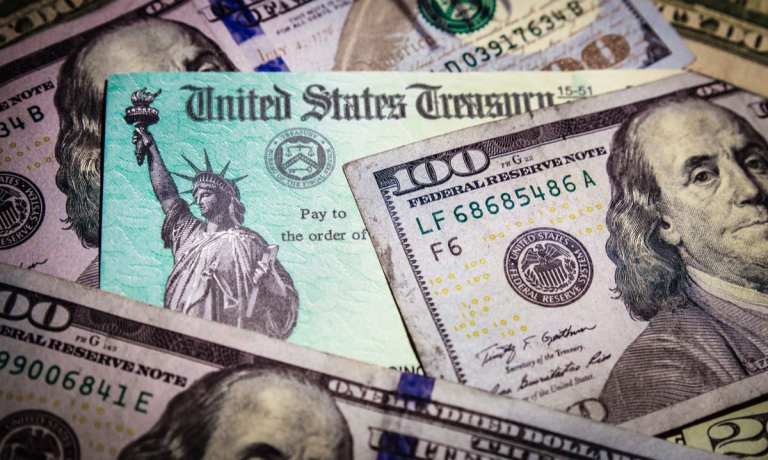
After months of debate, the $1.9 trillion American Rescue Plan has officially been passed by both houses of Congress and signed into law by President Biden. The nearly $2 trillion in legislation will send hundreds of billions into new expanded unemployment benefits; an expanded tax credit of up to $3,600 per child, initially distributed in monthly installments; 130 billion to elementary, middle and high schools to assist with safe reopening; and $25 billion for small and mid-sized restaurants, among others.
Among the most avidly watched, however, is the third round of economic stimulus payments — $1,400 direct payments to individuals making up to $75,000 annually or families with income up to $150,000. As every member of a household is entitled to a $1,400 payment, a family of four should expect to receive $5,600.
And expect to receive it starting soon — some Americans will in fact get their latest payout over the weekend as the IRS begins rolling out direct deposits to eligible recipients. As this is now the third run-through of such direct payments to citizens, the IRS has actually gotten fairly efficient when it comes to dispersing these funds.
What are consumers going to do when they get those funds? That, it seems is a bit of an up-in-the-air point, as even the stock market seems a bit split on how optimistic investors are willing to get about the incoming infusion of funds to the economy, according to reports in MarketWatch.
On the whole, futures are on the rise market watchers note, indicating that investors are gaining confidence. But there is reason to be somewhat nervous about how much of the money that will start depositing into accounts this weekend will actually filter back into the economy in the form of spending.
It didn’t the first time through — at least not in proportions consistent with the level of spending previous rounds of federal stimulus produced. Only 15 percent of consumers reported spending the money and then only a portion of it, at about 40 percent. Of the remaining 60 percent, half went to savings and half went to pay down debt, according to report by the National Bureau of Economic Research (NBER).
To provide a sense of where the dollars went, respondents said they spent the funds on food and beauty products, which we note are anything but splashy items or durable goods. As noted in the NBER paper, little of the spending went to industries “hard-hit” in the pandemic, such as cars and appliances. And while the specifics of the data has varied some — back in late June, the U.S. Census Bureau reported that, across more than 73,000 households that responded to its Household Pulse survey, 14.1 percent planned to save their stimulus checks, and 15.7 percent planned to pay off debt — the overall big picture doesn’t vary much.
Will Consumers Spend, Or Save?
Faced with uncertainty, consumers thus far have been more likely to collect their stimulus checks and put them toward bulking up their savings and tapping them for paying down their debt. Spending them on consumer goods is, at best, a third-ranked priority.
Will consumers carry on with the savings in the third iteration of stimulus payments? Preliminary data, it seems, points to yes. A Bank of America survey from earlier in the week indicates that 36 percent of respondents said they would spend the money, 30 percent report plan to pay off debt, 25 percent plan to save and 9 percent plan to invest.
“We group all three of these as ‘saving’ in a broad sense, since the payments stay within the financial system and don’t create demand for goods and services in the real economy,” BofA explained on its choice to group debt repayment, formal saving and investing as savings. A study commissioned by Bloomberg revealed a similar result — consumers were showing greater enthusiasm for saving, investing or paying down debt with their stimulus dollars than they were about spending it directly, though Bloomberg showed a thinner margin on that preference. A survey by Deutsche Bank indicates that younger consumers getting those checks are increasingly excited to invest, with half of respondents indicating plans to take their stimulus funds to the market.
Which isn’t to discount the spending that his latest round of stimulus will kick off, particularly among lower-income consumers. When the second round of payment began hitting the market in early January, consumer spending in the week that ended Jan. 10 surged by more than 20 percent compared with the year-ago week, according to an analysis cited by The Wall Street Journal. But spending among higher-income households was flat, meaning that big pick-up was powered by lower-income households, accordion to Jonathan Silver, chief executive of Affinity Solutions.
Some 88 percent of those households, he noted, sprinted through those funds “like it burned a hole through their pockets” as they raced to mitigate “significant pent-up demand for necessities.”
Pent-up demand that consumers might be increasingly willing to let loose as stimulus funds flow in this time around. Though how many and where they might go remains to be seen.